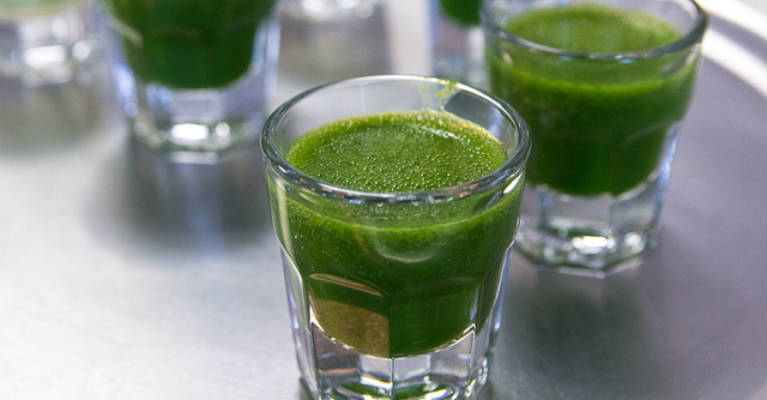Wheatgrass is a term used to describe the young grass of Triticum aestivum, a wheat plant that naturally grows in North America and Europe. It is good to know that you can grow your wheatgrass and this process is simple and inexpensive. On top of that, you will know that the grass has high quality.
The time for harvesting starts about seven days after the germination of seeds. The majority of wheatgrass has a very bitter taste. The grass should not be exposed to direct sunlight and it should be harvested after the germinating phase because this is when the grass is sweetest. If it is left in direct sunlight, wheatgrass will become even more bitter.
Why Should We Use Wheatgrass
Wheatgrass has closely bound roots and requires moist soil to develop fast. However, this is the reason why this plant can lead to the formation of mold. In case this happens, the mold can have negative effects on you. The best idea is to plant the wheatgrass in a less crowded area to provide adequate air circulation.
In addition, you should water the plant less frequently and plant the seeds adequately by leaving enough room for each seed to develop. In this way, you will avoid the development of mold.
Studies have confirmed that wheatgrass is a rich source of minerals and vitamins like:
- Calcium;
- Vitamin E, B12 and A;
- Magnesium;
- Selenium;
- Iron;
- Zinc.
Wheatgrass also comes with all the B vitamins and potassium, sodium, and phosphorus in an adequate ratio. This plant is loaded with protein – only two ounces of fresh wheatgrass juice contains a protein found in five pounds of high-quality organic veggies.
Why Should We Use Wheatgrass Daily?
Wheatgrass supplies our body with countless minerals, vitamins, enzymes, antioxidants, and phytonutrients. This plant supports the neutralization of toxins and pollutants found in the body by cleansing our blood and liver.
In addition, wheatgrass comes with superoxide disumates (enzymes that keep us safe from carcinogens), that can lower the radiation effects, process toxins from the organs and tissues and detoxify pollutants and heavy metals from the body. We should also mention that wheatgrass juice is especially rich in chlorophyll.
On the other hand, chlorophyll comes with exceptionally powerful healing properties. In case you didn’t know, green plants are the only plants that can convert the energy of the sun into chlorophyll with the help of the process known as photosynthesis. Thanks to this incredible phytonutrient, the cells in our body can heal and make progress.
Chlorophyll comes with a high amount of oxygen which means that we will provide more oxygen to our blood. By consuming wheatgrass juice regularly, you will increase both blood oxygen levels and the number of red blood cells.
As you probably know, oxygen is crucial for many processes that take place inside our bodies and this is especially true when it comes to the brain which relies on ¼ of the oxygen supply. To put it in simple words, high oxygen levels provide amazing health benefits to our bodies.
Wheatgrass – a Highly Alkalizing Food Everyone Should Include in Their Daily Diet
It turns out that wheatgrass is among the best natural alkaline enhancers packed with numerous nutrients. Our body needs to preserve body pH values between 7.35 and 7.45 to stay healthy and to keep every system functioning properly. Eating and drinking wheatgrass is one of the best methods to combat acidity and keep the balance because it can cleanse extra acidity.
And in case this doesn’t impress you, wheatgrass comes with D1-G1 and P4-D1 enzymes and these enzymes can repair the genetic structures that were affected by X-rays and/or radioactivity.
How To Include The Therapeutic Health Benefits Of Wheatgrass
With the help of juicing, you will be able to take all the nutrients from any vegetable because this process prepares them well for absorption. Many people simply can’t find the time and means to eat vegetables daily, but this process is much simpler when you are making veggie juice.
Keep in mind that wheatgrass has a flavor that is considered to be very bitter by some people. So, feel free to add ingredients that will make this juice sweeter. Some of the ingredients that you can use are bananas, coconut water, and sweet pineapple.

Pineapple and Coconut Green Smoothie and Wheatgrass Recipe
Ingredients:
- Four ounces of fresh wheatgrass juice;
- Two small, peeled bananas;
- Two cups of pineapples (make cubes);
- Four ounces of coconut water;
- One cup of baby spinach.
Instructions:
Begin by pouring the wheatgrass juice into the blender and after that put the peeled bananas and pineapple. The spinach should be placed last. Use high-speed mode for about half a minute or wait until the smoothie becomes creamy.
His wheatgrass juice must be taken while it is still fresh or in less than fifteen minutes in case you want to experience all the benefits that this natural juice brings.
Sources: Mercola | The Alkaline Diet | Live Strong
